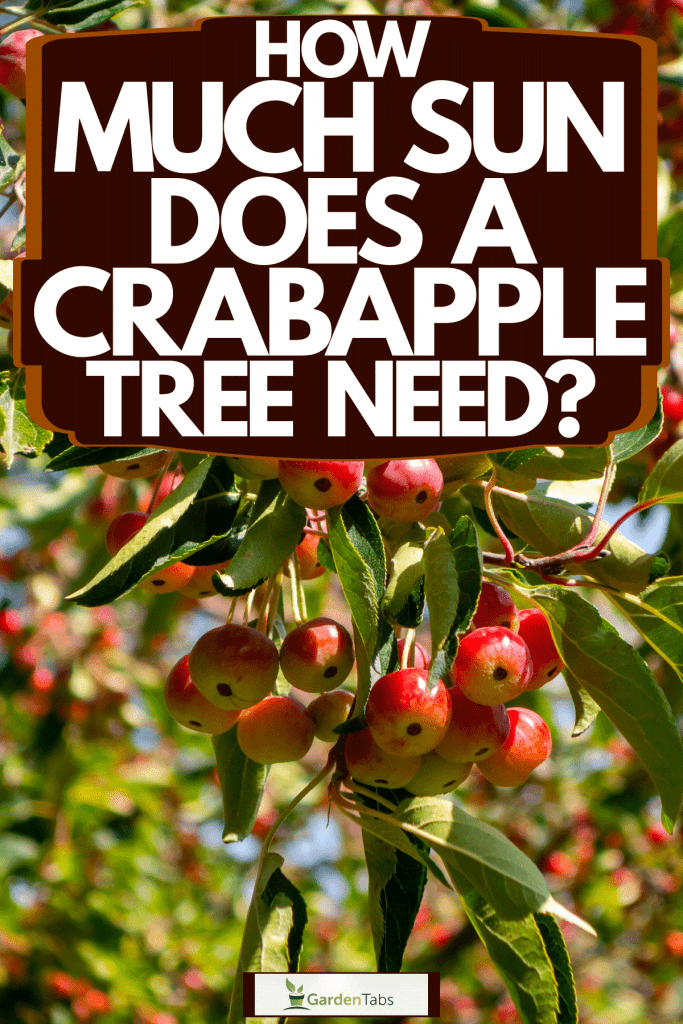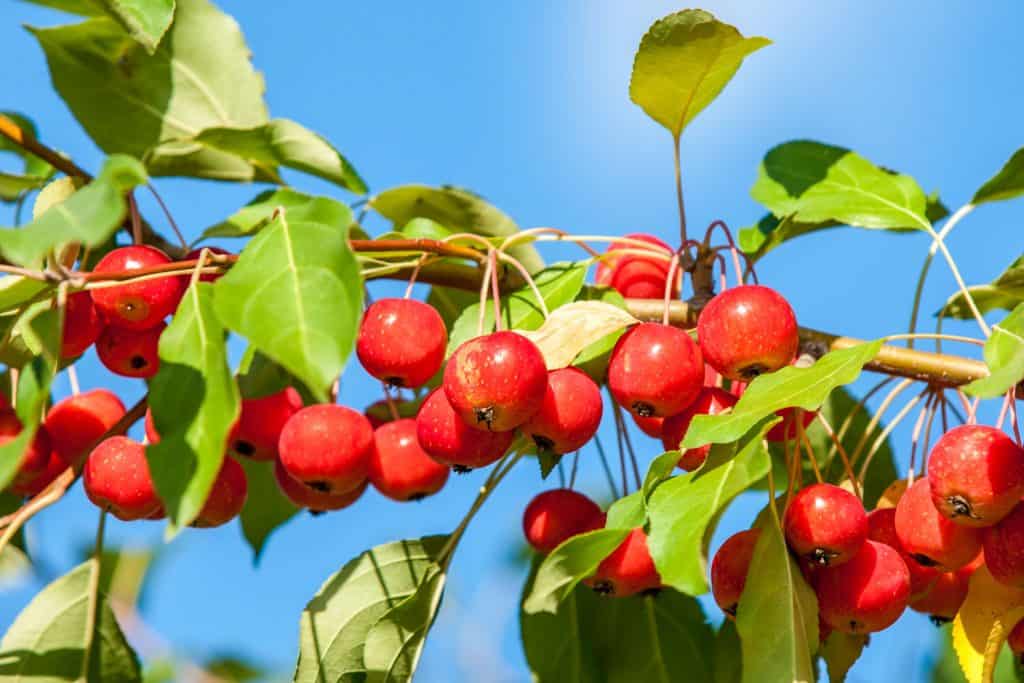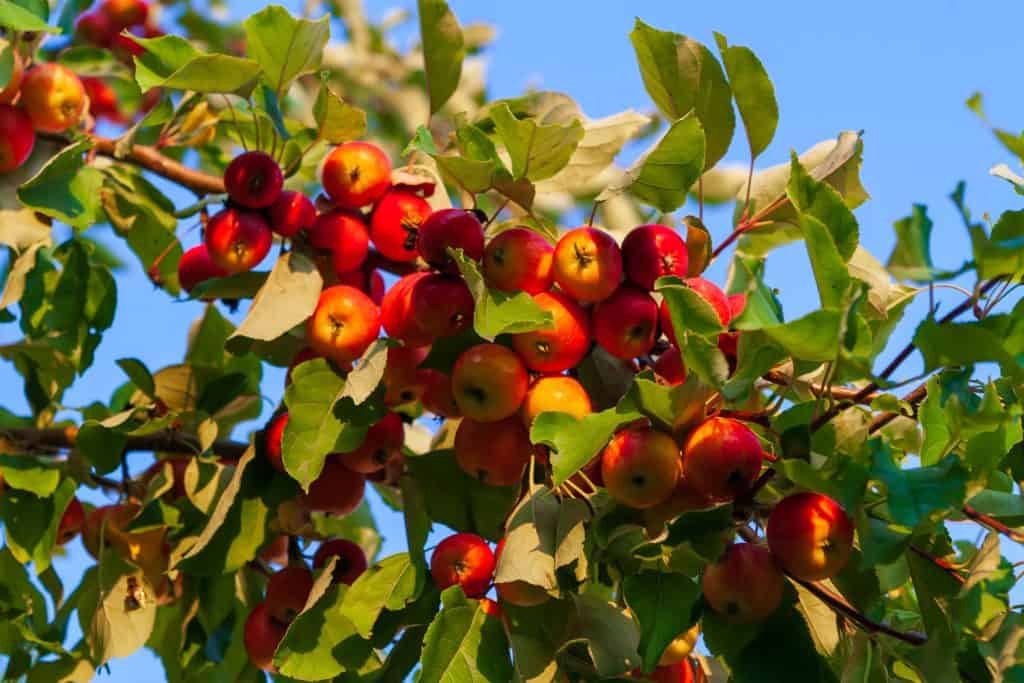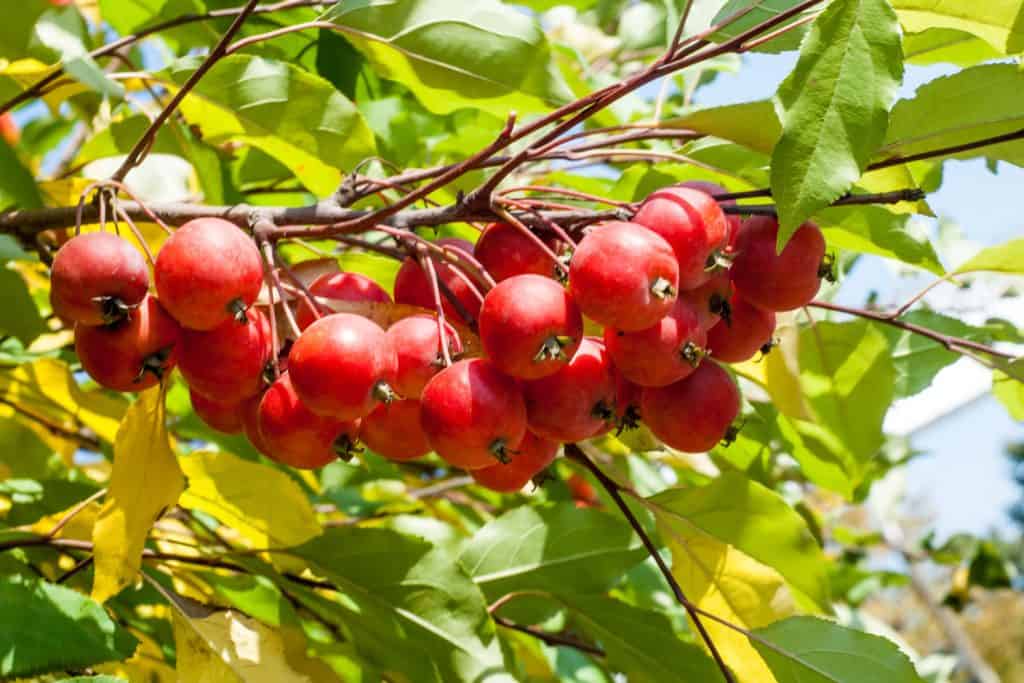Crabapples are small-to-medium size trees that provide flowers in the spring and fruit in the fall and winter. These trees have been used decoratively for years and are popular for landscaping options. However, before you can get your new tree planted, you need to know how to care for it. A crabapple needs specific light requirements if you want to enjoy its true beauty. We've done the research and can tell you how much sun the tree needs.
Crabapple trees, or Malus, need at least six hours of sunlight per day. While the exact requirements will change depending on the location and cultivar of crabapple, many of these trees can benefit from even more than six hours. Some will thrive off of eight to 12 hours.
Now that we know the lighting requirements for a crabapple tree, let's learn more. Keep reading to discover if this tree is shade tolerant, how long they live, and other important information about your Crabapple.

Crabapple Tree Description
Crabapples are excellent options for those who need a tree for a smaller area. At full maturity, most cultivars of crabapple grow between 13 and 39 feet tall. These trees have flowers in the spring months that can be pink, white, magenta, or red. Then, the tree will produce small apples in the fall and winter months.
These species of trees will produce fruits that are under two inches in diameter. This is an important distinction. If a Malus produces a fruit that is greater than two inches, it's considered an apple. Those smaller are crabapples. These fruits are edible, just like apples. However, many crabapple trees have been cultivated for their looks and not the taste of their fruit.
Ideal Light Conditions
To get a crabapple tree that produces the most flowers and fruit, you'll need to care for it properly. While these trees are considered easy to care for, they will thrive when given the proper care. One of the most important things your crabapple tree needs is sunlight. These trees enjoy a lot of it. While exact requirements will vary by the cultivar, most crabapples will need at least six hours of sunlight. However, many will do better with approximately eight hours of direct light.
Your plant's lighting needs will also change depending on your overall climate. Crabapples have a USDA hardiness rating for zones 4 through 8. It also has an American Horticulture Society Heat-Zone rating for zones 1 through 9.

While the hardiness rating is based on how cold a region is, the plant heat zone map measures how hot it is. This method tracks the number of days a location experiences temperatures above 86 degrees Fahrenheit. Then, it uses that information to determine how high of a heat rating to give.
If you live in a high heat zone, you will need to adjust your crabapple's lighting requirements. Be sure to protect your tree from the afternoon sun until you're sure it's established enough to handle the heat.
Other Conditions
Other than their high sun requirements, crabapple trees are easy to care for. They require little pruning. Typically removing dead, damaged, or diseased branches in early spring is adequate. Be sure not to over-prune this plant. When a crabapple tree isn't properly cut, it can cause problems with fruit and flowers later on.
You should also ensure that your crabapple has well-drained soil. While this tree will do well in most soil types, it will thrive if planted in an acidic area.
Growing plants around your crabapple tree can be beneficial. Planting under trees can be tricky. You have to make sure you pick something tolerant of shade and has similar soil requirements. Research any plant options before you put them around your crabapple tree to make sure they will benefit each other.
What Can You Plant Under Crabapple Trees?
Make sure that you utilize the area under your crabapple for additional garden space. Companion planting is a great way to help plants grow, fight off diseases, and repel or attract certain bugs.
Bulb plants will help to repress weeds around your tree. Consider daffodils, garlic, onion, and chives. Daffodils will help to deter gophers and deer. While garlic, onion, and chives are good at keeping insects away. In addition, chives can also help prevent apple scab, a common disease for this tree.
It would help if you also tried planting beans or clovers. The root systems for these types of plants release nitrogen into the soil. This addition will enrich the soil for the tree.
Can Crabapple Trees Grow In The Shade?

Crabapples require a minimum of six hours of sunlight per day. Although, most types of this tree will thrive off of eight to 12 hours of sunlight. These trees do have a slight shade tolerance.
While a crabapple tree can still see growth, it will affect its appearance if it's too shaded. Plants that are grown without enough sunlight will produce fewer flowers and fruit. They will also be more susceptible to diseases.
How Long Do Crabapple Trees Live
Trees can either have a short or a long lifespan. The plants that live for over 100 years are considered long-lived trees. Those who live less than a century are considered short-lived.
Crabapple trees fall into the short-lived category. These trees have an average lifespan of between 30 and 70 years. This is typical for fruit-bearing trees, which typically have shorter life spans.
If your crabapple tree makes it past 40 years, it will slowly produce fewer fruit and flowers. Regardless of age, if you notice yellowing and falling foliage, more dead branches, or strangely-timed flowering, then your tree may be starting to die.
For more information on removing this tree, check out: How To Remove A Crabapple Tree Stump - 7 Steps To Follow.
Do Crabapple Trees Grow Quickly?
How fast a crabapple tree grows will depend on what type you have. The University of Clemson's Home and Garden Center notes that crabapples grow anywhere from eight to 10 inches per year. There are varieties of crabapples that will grow faster than this. For example, the Robinson Crabapple (Malus 'Robinson') can grow over 25 inches per year.
For more information on how big this tree can get, check out: How Big Does A Crabapple Tree Get?
To Summarize

Crabapple trees add value to gardens throughout the year. These trees are easy to care for, and many crabapple cultivars have a high resistance to diseases. This means you can spend more time making sure your plant gets the proper amount of nutrients and sun.
Remember to aim for at least six hours of direct sunlight. However, this tree will most likely prefer closer to eight hours. If you live in a southern region, try to protect your plants from the afternoon sun until they're more established.
For more information on Crabapple growth, check out: Do Crabapple Trees Have Invasive Roots?
